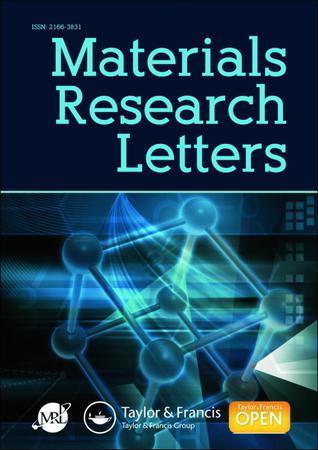电化学固氮的单原子位催化剂
IF 8.6
1区 材料科学
Q1 MATERIALS SCIENCE, MULTIDISCIPLINARY
引用次数: 0
摘要
可再生能源衍生的电化学固氮是一种可持续生产绿色氨(NH3)的方法,但其缓慢的动力学和复杂的反应途径限制了能源效率。为了提高氮转化效率,迫切需要高活性、选择性和鲁棒性的电催化剂。本文综述了电化学固氮单原子位点催化剂(SASCs)结构-功能相关性的最新研究进展,以期为SASCs的合理设计提供理论依据和指导。首先,我们回顾了N2和氮化氧在sasc上不同加氢途径的基本认识。然后,我们介绍了具有不同金属中心的明确定义的SASCs的最新进展以及局部化学环境(如配位数,第一壳层和第二球配位)的影响。最后,对这一新兴研究领域的未来发展进行了展望。本文提供了对电化学固氮的单原子位点催化剂的机理见解。本文章由计算机程序翻译,如有差异,请以英文原文为准。
Single-atomic site catalysts for electrochemical nitrogen fixation
Renewable-energy-derived electrochemical nitrogen fixation represents a sustainable way to produce green ammonia (NH3), but the energy efficiency is limited by its sluggish kinetics and complex reaction pathways. Highly active, selective and robust electrocatalysts are strongly needed to promote the efficiency of nitrogen conversion. Here, we provide an overview of the recent progress in understanding the structure–function correlation of single-atomic site catalysts (SASCs) for electrochemical nitrogen fixation, to provide mechanistic insights and guide the future rational design of SASCs. First, we review the fundamental understanding of both N2 and oxynitride reduction on SASCs, with different hydrogenation pathways. Afterwards, we present the recent progress in the development of well-defined SASCs with various metal centres and the influence from local chemical environments, such as the coordination number, first-shell and second-sphere coordination. At last, we listed some perspectives on future study in this emerging research field. GRAPHICAL ABSTRACT IMPACT STATEMENT The paper provides mechanistic insights into the single-atomic site catalysts towards electrochemical nitrogen fixation.
求助全文
通过发布文献求助,成功后即可免费获取论文全文。
去求助
来源期刊

Materials Research Letters
Materials Science-General Materials Science
CiteScore
12.10
自引率
3.60%
发文量
98
审稿时长
3.3 months
期刊介绍:
Materials Research Letters is a high impact, open access journal that focuses on the engineering and technology of materials, materials physics and chemistry, and novel and emergent materials. It supports the materials research community by publishing original and compelling research work. The journal provides fast communications on cutting-edge materials research findings, with a primary focus on advanced metallic materials and physical metallurgy. It also considers other materials such as intermetallics, ceramics, and nanocomposites. Materials Research Letters publishes papers with significant breakthroughs in materials science, including research on unprecedented mechanical and functional properties, mechanisms for processing and formation of novel microstructures (including nanostructures, heterostructures, and hierarchical structures), and the mechanisms, physics, and chemistry responsible for the observed mechanical and functional behaviors of advanced materials. The journal accepts original research articles, original letters, perspective pieces presenting provocative and visionary opinions and views, and brief overviews of critical issues.
 求助内容:
求助内容: 应助结果提醒方式:
应助结果提醒方式:


